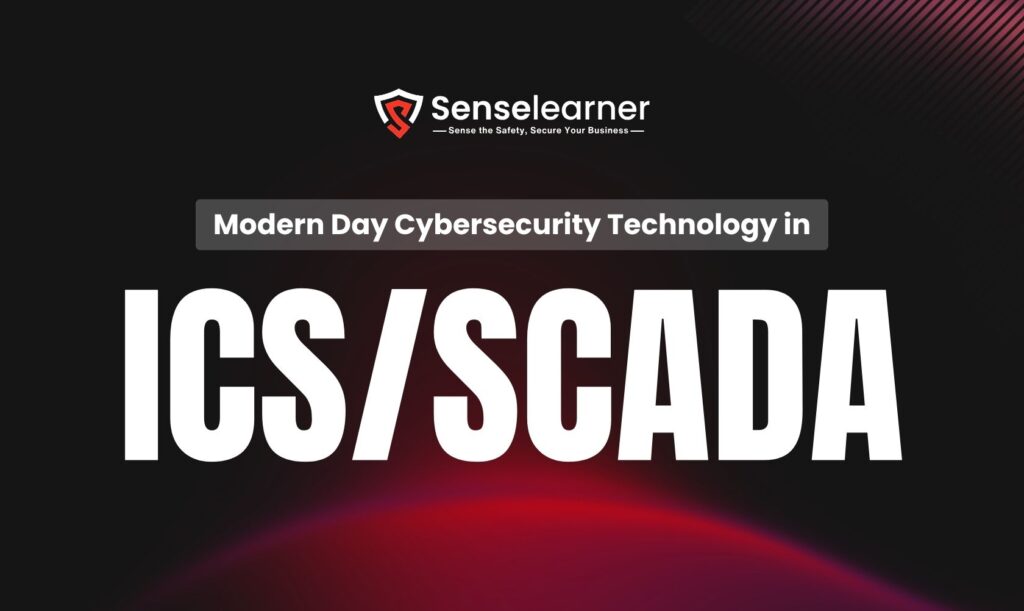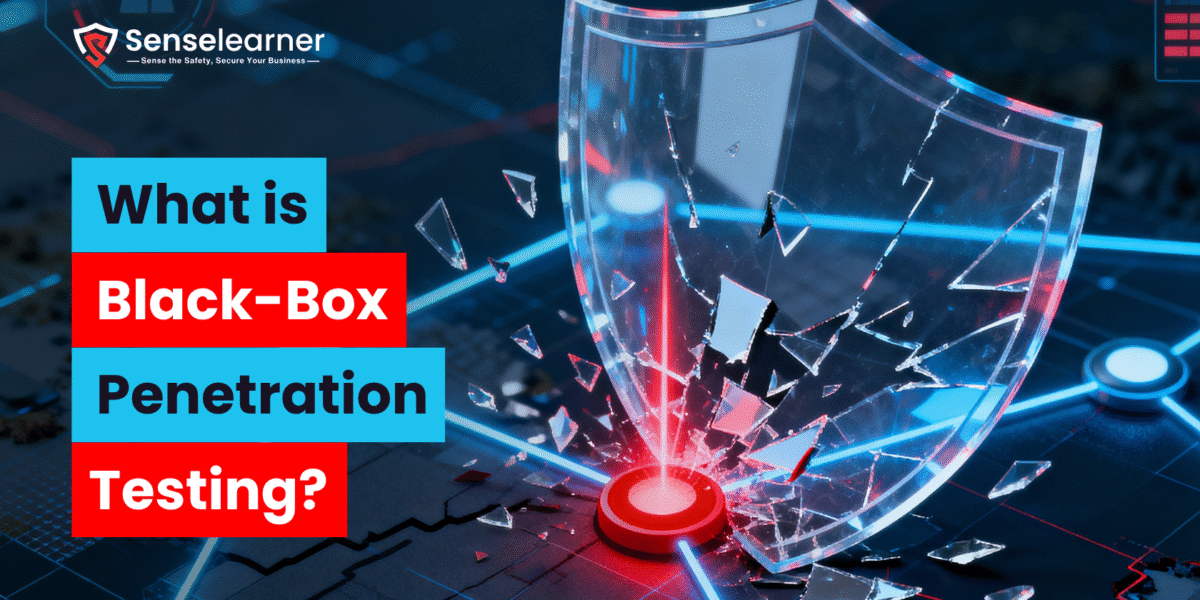The foundation of modern critical infrastructure, such as manufacturing facilities, transportation networks, water treatment plants, and power plants, is made up of Supervisory Control and Data Acquisition (SCADA) and Industrial Control Systems (ICS). They keep a watch on and manage industrial operations to guarantee dependability, efficiency, and safety. However, as these systems increasingly connect to business networks and the internet, they become more susceptible to cyberattacks. Finding vulnerabilities, safeguarding resources, and preserving operational continuity all depend heavily on ICS/SCADA security testing. In the present threat environment, it is essential for businesses controlling critical infrastructure to understand how to defend these systems.
Table of Contents
What is the Role of ICS/SCADA Systems in Operating Critical Infrastructure?

Specialized control systems called industrial control systems (ICS) are used in critical infrastructure sectors to automate and manage industrial processes. Distributed Control Systems (DCS), Programmable Logic Controllers (PLC), and other control devices that keep watch on and manage production lines, utility operations, and machinery are all included in ICS. By keeping exact control over physical processes, including the creation of chemicals, energy, and water treatment, they guarantee that processes run effectively, safely, and dependably. ICS lowers the possibility of operational errors, permits continuous operations, and requires less human intervention. These systems have direct influence over industrial activities; thus, any vulnerability or malfunction could have negative impacts on the environment, safety, or finances.
In order to monitor, operate, and analyze large-scale industrial operations, Supervisory operate and Data Acquisition (SCADA) systems offer a centralized interface. Operators can monitor performance, identify irregularities, and react quickly to incidents because of SCADA’s real-time data collection from far-away sensors, field devices, and PLCs. Throughout critical infrastructure networks, SCADA improves situational awareness, predictive maintenance, and decision-making. Additionally, it makes it possible to remotely operate remote assets including transportation systems, pipelines, and power grids. Since SCADA and ICS work together to form the foundation of industrial automation, their dependability and security are essential in maintaining public safety and national infrastructure.
Importance of ICS Security Testing

Find and Fix Vulnerabilities: ICS security testing finds flaws in network setups, protocols, hardware, and software before attackers can take advantage of them. This involves identifying setup errors, insecure communications, outdated firmware, and weak authentication that might interfere with industrial operations.
Ensure System Integrity and Reliability: Testing confirms that ICS systems operate effectively and safely in both typical and unusual circumstances. It minimizes downtime, operational errors, and potential risks by ensuring backups, fail-safes, and safety measures function properly.
Prioritize Remediation and Strengthen Controls: Testing helps organizations focus resources by identifying the most critical weaknesses. In order to make sure that security measures like firewalls, access controls, and monitoring systems are operating as intended, it also analyzes them.
Improve Incident Response Preparedness: Security testing acts as an attack scenario to evaluate response strategies, guaranteeing that teams are able to promptly identify, contain, and recover from emergencies. This improves the general defense against cyber threats, minimizes downtime, and lessens operational damage.
Maintain Stakeholder and Public Trust: Proactive testing and mitigation show an organization’s dedication to safe and dependable operations. Maintaining safe and continuous industrial operations improves public safety, strengthens stakeholder confidence, and strengthens the resilience of the nation’s infrastructure.
Vulnerabilities and Threats of ICS/SCADA Systems
Malware, ransomware, insider threats, and targeted attacks are just a few of the physical and cyber threats that ICS/SCADA systems have to deal with. Numerous systems are appealing targets because they make use of outdated software, weak authentication procedures, and unencrypted communications. Threat actors may aim to do physical harm, steal confidential information, or interfere with business operations. Risk is further increased by flaws in third-party integrations, remote access points, and network setups. Advanced persistent threats (APTs) take advantage of the disconnect between IT security and operational technology (OT) to attack industrial environments in particular. Designing effective defensive strategies to safeguard critical infrastructure begins with an understanding of these vulnerabilities.
How to Secure ICS/SCADA Networks and Device
Network segmentation, access controls, continuous monitoring, and endpoint protection are all components of a multi-layered strategy for ICS/SCADA network security. Reducing vulnerability to external dangers is achieved by the implementation of firewalls, intrusion detection systems, and secure remote access. Vulnerabilities are reduced via secure setups, frequent patching, and system updates. Defenses are further enhanced by device-level security measures like blocking unused ports and requiring strong authentication. Technical measures are supplemented by strict vendor management regulations, incident response planning, and employee training. Organizations may lower risk and preserve the availability, integrity, and safety of their critical infrastructure by incorporating cybersecurity practices into their daily operations.
Modern Day Cybersecurity Technology in ICS/SCADA

Real-time monitoring and anomaly detection: Advanced anomaly detection systems keep watch on ICS/SCADA networks in order to spot odd or suspicious activity that might point to operational issues or cyberattacks. Through real-time analysis of device activity, network traffic, and process parameters, these systems assist in avoiding disturbances before they become serious malfunctions.
Integration of AI and Machine Learning: By identifying trends and anticipating possible attacks, AI and machine learning improve threat detection. By detecting zero-day vulnerabilities, identifying tiny changes in operational data, and optimizing response methods, these systems offer proactive defense against changing cyberthreats aimed at industrial environments.
SIEM and Industrial Intrusion Detection Systems (IIDS): IIDS are designed to find malicious activity or unauthorized access in ICS/SCADA networks. Organizations benefit from centralized visibility, logging, and real-time alerting when they integrate with Security Information and Event Management (SIEM) systems, which guarantees quicker threat detection and response.
Encryption, Secure protocols, and Multi-factor authentication: In ICS/SCADA environments they are essential for safeguarding user access and communications. Multi-factor authentication (MFA), secure protocols, and encrypted channels all work to protect data integrity, stop unwanted access, and reduce the possibility of exploitation using identities that have been compromised.
Digital twins, cloud-based solutions, and simulation: Cloud platforms and digital twins are used in modern cybersecurity to evaluate risks, model industrial processes, and safely test security scenarios. With this method, businesses may assess possible risks, improve setups, and boost resilience without
Focus Areas for ICS/SCADA Penetration Testing
Finding vulnerabilities in various network segments, hardware, and software components is the main goal of ICS/SCADA penetration testing. Human-machine interfaces (HMIs), legacy systems, communication protocols, and remote access points are important topics. To evaluate the security of control systems and incident response procedures, testers simulate real incidents. Weaknesses are identified and fixed by assessing firmware integrity, network segmentation, and authentication procedures. Penetration testing also evaluates cloud connectivity, third-party integrations, and supply chain threats. In critical industrial environments, businesses can enhance defenses and sustain uninterrupted, secure operations by proactively focusing on key areas of attention.
Public-Private Collaboration and Information Sharing
ICS/SCADA security is improved by cooperation between public and private sector entities as well as cybersecurity organizations. Sharing best practices, attack patterns, and threat intelligence enables firms to stay ahead of new threats. Programs for worker training, vulnerability disclosure, and coordinated incident response are made possible by public-private partnerships. Threats and mitigation techniques are communicated in a timely manner because of initiatives like Information Sharing and Analysis Centers (ISACs). By working together, vital infrastructure sectors may better prepare for threats, increase resilience, and preserve national security. Stakeholders can improve the defense of critical services against cyberattacks and reduce the effect of possible interruptions by promoting openness and collaboration.
Security Challenges in ICS and SCADA
Proprietary protocols and legacy systems: Many ICS/SCADA setups are powered by outdated software and hardware that was created decades ago, frequently without built-in security safeguards. Because proprietary protocols might not work with contemporary cybersecurity solutions, they make protection much more difficult.
Operational Restrictions on Patching: In contrast to IT systems, industrial settings place a higher priority on safety and availability. Critical operations may be disrupted by downtime caused by patch or update applications. This makes it difficult to quickly fix vulnerabilities.
Integration with Corporate Networks and IT: ICS/SCADA systems take on IT-related issues when they are linked to business networks for data sharing and efficiency. This convergence creates fresh opportunities for online attacks and increases the attack surface.
Supply chain risks and insider threats: Workers, subcontractors, or outside suppliers who have access to systems may purposefully or unintentionally cause risks. Additionally, insecure supply chains give hackers the chance to compromise systems before they are put into use.
Changing Cyberattack Methods: Cybercriminals are becoming more skilled and are targeting ICS/SCADA with ransomware, advanced persistent threats (APTs), and nation-state attacks. It takes constant monitoring, threat intelligence, and knowledgeable cybersecurity specialists to stay on top of these changing strategies.
Regulatory Standards and Compliance for Critical Infrastructure Securing
Compliance with regulatory frameworks guarantees that ICS/SCADA systems fulfill industry best practices and minimal security requirements. Guidelines for risk management, access control, incident response, and monitoring are provided by standards such as the NIST Cybersecurity Framework, IEC 62443, ISO 27001, and NERC CIP. Following these guidelines enables businesses to show due diligence, stay out of trouble with the law, and win over stakeholders. Additionally, regular security audits, vulnerability assessments, and ongoing security measure enhancements are encouraged by regulatory compliance. In addition to being required by law, fulfilling these standards is essential for protecting national infrastructure and reducing the effects of cyberattacks.
FAQ’s
What occurs in the event that SCADA/ICS systems are compromised?
ICS and SCADA systems control critical infrastructure, their compromise can have serious repercussions. A successful hack could cause widespread disruptions and inconvenience to the public by interfering with essential utilities like gas, water, electricity, or transportation. Attacks have the ability to stop manufacturing lines in industrial environments, resulting in significant financial losses and supply chain interruptions. In addition to downtime, damaged systems may result in hazardous situations that endanger worker safety, harm delicate equipment, or create environmental risks like power surges or chemical leaks.
In what ways do remote access points put ICS/SCADA at risk?
From outside facilities, engineers and vendors can monitor and repair ICS/SCADA systems due to remote access. Even if they are practical, unprotected remote access points can be used by hackers to infiltrate industrial networks. Weak passwords, unsecured connections, and unmonitored VPNs are among the risks. To reduce these dangers, multi-factor authentication, secure remote access guidelines, and frequent access evaluations are crucial.
How can ICS/SCADA security be enhanced by awareness and training?
The first line of defense is frequent employees. Staff members who receive the right training are guaranteed to understand security guidelines, spot phishing or social engineering attempts, and adhere to secure operating procedures. In addition to technical security measures, regular drills, tabletop exercises, and awareness campaigns lower insider threats and human error.
Conclusion
To safeguard essential systems against cyberthreats that could interfere with operations, compromise security, or result in monetary loss, ICS/SCADA security testing is crucial. Organizations may successfully protect their networks and devices by understanding the function of these systems, evaluating vulnerabilities, putting modern cybersecurity technology into practice, and following regulatory regulations. Penetration testing, ongoing monitoring, and public-private cooperation all help to strengthen defenses against changing threats. In an increasingly interconnected industrial world, putting cybersecurity first in ICS/SCADA environments guarantees operational continuity, safeguards national interests, and fosters confidence in the safe provision of critical services.



